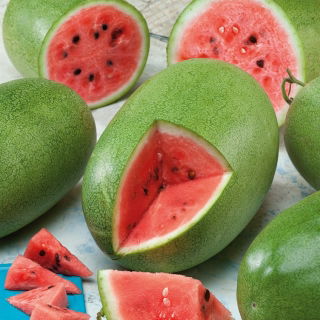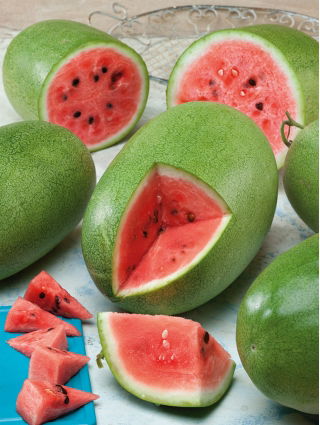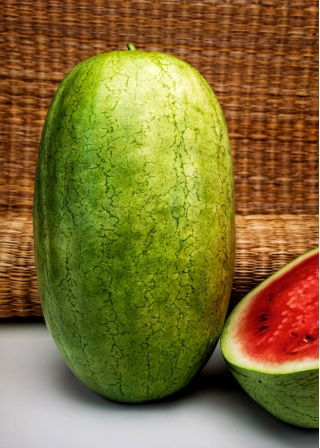- US Dollars ($)
- Euro (€)
- GB Pound (£)
- Chinese Yuan (元)
- Swedish krona (kr)
- Russian ruble (₽)
- Hong Kong dollar (HK$)
- Norwegian krone (kr)
- Indian rupee (₹)
- New Taiwan dollar (NT$)
- Danish krone (kr)
- Hungarian forint (Ft)
- Saudi riyal (SR)
- Bulgarian lev (лв)
- Czech koruna (Kč)
- Israeli shekel (₪)
- Indonesian rupiah (Rp)
- Japanese yen (¥)
- Korean won (₩)
- Malaysian ringgit (RM)
- Romanian leu (leu)
- Swiss franc (Fr.)
- Serbian dinar (din)
- Vietnamese đồng (₫)
- Ukrainian hryvnia (₴)
- Turkish lira (₺)
- Thai baht (฿)
- CAD Dollars ($)
- English
- German - Deutsch
- French - Français
- Spanish - Español
- Italian - Italiano
- Swedish - Svenska
- Norwegian - Norsk
- Danish - Dansk
- Nederlands
- Estonian - Eesti keel
- Finnish - Suomalainen
- Hungarian - Magyar
- Latvian - Latviešu valoda
- Lithuanian - Lietuvių
- Portuguese - Português
- Bulgarian - български
- Czech - Čeština
- Croatian - Hrvatski
- Romanian - Română
- Slovak - Slovák
- Slovenian - Slovenščina
- Categories
-
Seeds
-
Vegetable Seeds
-
Flower Seeds
-
- Ageratum, Flossflower seeds
- Alyssum seeds
- Amaranth Seeds
- Aquilegia, Columbine seeds
- Aster seeds
- Aubrieta Seeds
- Begonia seeds
- Bellis perennis, Daisy seeds
- Californian Poppy Seeds
- Campanula, Bellflower seeds
- Celosia, Cocksbomb seeds
- Centaurea, Cornflower seeds
- Chrysanthemum, Painted Daisy seeds
- Coleus seeds
- Convolvulus seeds
- Coreopsis seeds
- Cosmos seeds
-
- Datura seeds
- Dianthus, Carnation seeds
- Echinacea, Coneflower seeds
- Flower seed mixtures
- Forget me not seeds
- Foxglove seeds
- Gaillardia Seeds
- Gazania seeds
- Geranium, Pelargonium seeds
- Godetia seeds
- Gourd, Ornamental squash seeds
- Gypsophila, Baby's Breath seeds
- Hollyhock seeds
- Impatiens seeds
- Ipomoea, Morning glory seeds
- Calabash, Bottle Gourd seeds
- Larkspur, Delphinium seeds
-
- Limonium, Statice seeds
- Lobelia seeds
- Lupin, Lupine seeds
- Lychnis, Catchfly seeds
- Mallow Seeds
- Marigold, Tagetes seeds
- Milkweed Seeds
- Nasturtium seeds
- Nemesia seeds
- Nepeta, catmint seeds
- Nicotiana, Ornamental Tobacco seeds
- Nigella, Love in a mist seeds
- Pansy seeds
- Petunia and Surfinia seeds
- Phlox seeds
- Poppy seeds
- Primula, Primrose seeds
-
- Red Valerian, Centranthus Seeds
- Ricinus, Castor bean seeds
- Runner bean seeds
- Safflower seeds
- Salvia, Ornamental sage seeds
- Snapdragon Seeds
- Stock seeds
- Strawflower, Golden everlasting seeds
- Sunflower seeds
- Sweet pea seeds
- Tunbergia, Black-eyed Susan Vine seeds
- Verbascum, Mullein seeds
- Verbena seeds
- Veronica, Speedwell seeds
- Viola, Violet seeds
- Zinnia seeds
-
- Herb Seeds
- Sprouting Seeds
-
Flower Bulbs
-
- Lily of the Incas seedlings, Alstroemeria
- Lily of the Nile seedlings, Agapanthus
- Hollyhocks seedlings, Alcea
- Alum root seedlings, Heuchera
- Anemone bulbs
- Columbine seedlings, Aquilegia
- Arum bulbs
- Astilbe seedlings
- Athyrium
- Begonia bulbs
- Bergenia seedlings
- Canna lily rhizomes
- Lily of the valley rhizomes, Convallaria
-
- Montbretia bulbs, Crocosmia
- Cyclamen bulbs
- Dahlia tubers
- Bleeding heart seedlings, Dicentra
- Coneflower seedlings, Echinacea
- Freesia bulbs
- Galtonia bulbs
- Gladiolus bulbs
- Glory Lily seedlings, Gloriosa
- Daylily seedlings, Hemerocallis
- Plantain Lily rhizomes, Hosta
- Iris bulbs and seedlings
- Peruvian daffodil bulbs, Ismene
-
- Ixia bulbs
- Tritoma seedlings, Kniphofia
- Gayfeather bulbs, Liatris
- Lily bulbs, Lilium
- Lupin seedlings, Lupinus
- Ornamental grass seedlings
- Star of Bethlehem bulbs, Ornithogalum
- Oxalis bulbs
- Peony rhizomes, Paeonia
- Poppy seedlings, Papaver
- Pasque flower seedlings, Pulsatilla
- Phlox seedlings
- Tuberose bulbs, Polianthes
-
-
Garden Equipment
-
At home
- Around home
-
Fertilizers
-
- All-purpose fertilizers
- Autumn and winter fertilizers
- Blueberry fertilizers
- Boxwood fertilizers
- Bulb plants' fertilizers
- Grass and lawn fertilizers
- Citrus plant fertilizers
- Compost
- Conifer fertilizers
- Dolomite and lime fertilizers
- Dry powder fertilizers
- Fertilizers for balcony and terrace plants
- Fertilizers for moss-infected lawns
- Fertilizers in pump sprayers
-
- Fertilizers in watering cans
- Fertilizers sticks
- Fertilizers with leaf shine
- Flowering plant fertilizers
- Fruit fertilizers
- Fruit tree fertilizers
- Garden plant fertilizers
- Gel fertilizers
- Geranium fertilizers
- Green plant fertilizers
- Herb fertilizers
- Home plant fertilizers
- Hydrangea fertilizers
- Lavender fertilizers
-
Watermelon Charleston Gray is a remarkable variety sure to delight enthusiasts of juicy and sweet fruits. It is characterised by mid-to-late maturation and impressive resistance to anthracnose and mosaic virus, making it an excellent choice for cultivation both under cover and in open ground. The fruits of this variety can reach an impressive weight of up to 15 kg and have a cylindrical shape. The flesh is pink-red, crisp, and exceptionally sweet, making it perfect for raw consumption and as a base for refreshing summer desserts.
Sowing
To enjoy bountiful harvests, it is important to ensure proper sowing of Charleston Gray watermelon seeds. The seeds are best sown in previously prepared soil, ensuring it is well-aerated and rich in nutrients. Cultivation under cover can provide better thermal conditions and speed up the germination process.
Sowing Depth
Charleston Gray watermelon seeds should be placed at a depth of 2-3 cm. It is important to cover them thoroughly with soil to provide optimal conditions for germination and protection against external factors.
Direct Sowing Period
When to sow Charleston Gray watermelon seeds directly in the ground? It is best to do so after 15th May, when the risk of frost has passed, and the soil is sufficiently warmed. This is the ideal time to provide young plants with the best conditions for growth.
Sowing Period Under Cover
When to sow Charleston Gray watermelon seeds under cover? The optimal period for starting cultivation under cover is March and April. This allows the plants enough time to develop before transplanting to the ground.
Planting Time
Planting Charleston Gray watermelon is best carried out after 15th May, when the soil is already appropriately warmed, and young plants can safely be transferred to their final position in the garden.
Plant Spacing
Charleston Gray watermelon requires space for proper growth, so a spacing of 150x100-150 cm is recommended. This arrangement allows for the free development of leaves and fruits while ensuring adequate air circulation.
Site Conditions
Charleston Gray watermelon thrives best in a sunny location, providing optimal conditions for growth. The soil should be fertile, well-drained, and well-watered. This plant performs excellently in soils with a neutral to slightly alkaline pH.
Growing Tips
During the cultivation of Charleston Gray watermelon, it is beneficial to water the plants regularly, especially during dry periods, to ensure a constant water supply. Organic fertilisation, such as compost, can significantly improve soil quality and support the development of healthy fruits. Regular weeding and loosening the soil around the plants will contribute to better growth.
Harvest Period
Charleston Gray watermelons mature from August to October. It is best to harvest when the fruit's skin starts to acquire a characteristic matte shade and emits a hollow sound when gently tapped.
Resistance to Diseases
Charleston Gray exhibits high resistance to anthracnose and mosaic virus, making it less susceptible to common cultivation diseases. This ensures healthier yields and a reduced risk of losses.
Good to Know
Charleston Gray watermelon not only tastes wonderful but also provides valuable nutrients such as vitamin C and potassium. Its crisp flesh is an ideal addition to summer salads or cocktails. It is also worth noting that the seeds of this variety have been laboratory tested, guaranteeing their high quality and reliability.
Why Buy from Garden Seeds Market
Garden Seeds Market offers only premium seeds that meet the highest quality standards. Customers praise us for prompt delivery and professional service. By choosing our shop, you can expect safe purchases and full support in cultivation. Additionally, regular quality tests on seeds guarantee their exceptional effectiveness.
The package contains 1 g of seeds. The packaging includes information on cultivation guidelines and the expiration date for sowing.
New


My account
Store
Customer information
Information

© -2025 Gardenseedsmarket.






